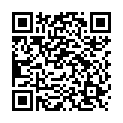|
|
|
| Module code: E611 |
|
4V (4 hours per week) |
|
2 |
| Semester: 6 |
| Mandatory course: yes |
Language of instruction:
German |
Assessment:
Written examination
[updated 12.03.2010]
|
E611 Electrical Engineering, Bachelor, ASPO 01.10.2005
, semester 6, mandatory course
|
60 class hours (= 45 clock hours) over a 15-week period.
The total student study time is 60 hours (equivalent to 2 ECTS credits).
There are therefore 15 hours available for class preparation and follow-up work and exam preparation.
|
Recommended prerequisites (modules):
None.
|
Recommended as prerequisite for:
|
Module coordinator:
Prof. Dr. Horst Wieker |
Lecturer:
Prof. Dr. Horst Wieker
[updated 12.03.2010]
|
Learning outcomes:
After successfully completing this module, students will have detailed knowledge about the use of microprocessors in telecommunications.
Students will learn the theoretical relationships between the design of the hardware and the software that runs on it. To illustrate the principles involved, students will learn about the design of an access unit of the type typically found in embedded systems. Another key objective of this course is to provide students with a detailed understanding of different (telecommunication and microprocessor) clock systems.
[updated 12.03.2010]
|
Module content:
1.General structure of a telecommunications system
2.Application of microprocessors as illustrated by a controller unit in an
optical network.
3.Structure and functionality of a microprocessor
4.Structure of PCM-30 systems
5.Use of HDLC controllers
6.Integration of memory time switch devices (interface components)
7.ISDN chipset (Basic Access) / POTS (analogue telephone)
8.Interrelationship between HW and SW architectures
9.Telecommunications software in detail
10.Bus applications in telecommunications systems
12.2-Clock systems (µP, PCM)
[updated 12.03.2010]
|
Teaching methods/Media:
Video projector, blackboard
[updated 12.03.2010]
|
Recommended or required reading:
SCHIEF R., Einführung in die Mikroprozessoren und Mikrocomputer, Attempto, 1997
SCHMITT G., Mikrocomputertechnik mit 8086-Prozessoren, Oldenburg
[updated 12.03.2010]
|


